
How to Use Serial MP3 Player: Examples, Pinouts, and Specs
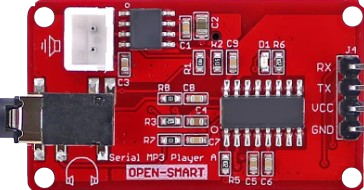
 Design with Serial MP3 Player in Cirkit Designer
Design with Serial MP3 Player in Cirkit DesignerIntroduction
The Serial MP3 Player is a compact audio module that can play MP3 files stored on a microSD card. It is designed for easy integration into various electronic projects, including interactive installations, sound effects for toys, or as a standalone MP3 player. The device is controlled via serial commands, making it compatible with microcontrollers such as Arduino, Raspberry Pi, and others.
Explore Projects Built with Serial MP3 Player
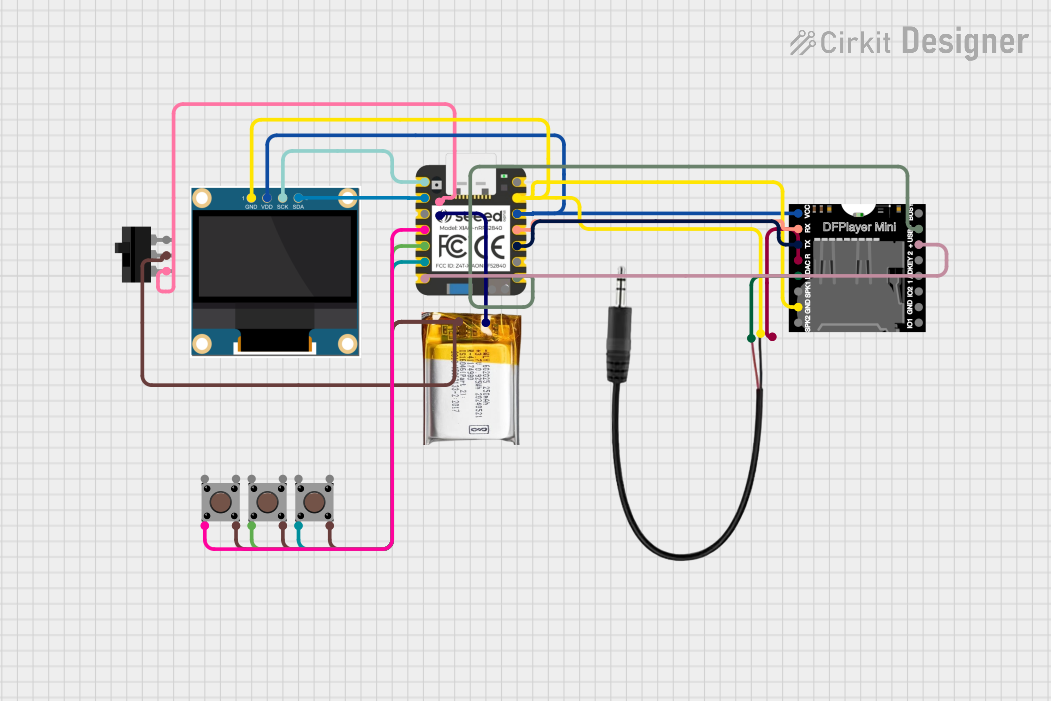
 Open Project in Cirkit Designer
Open Project in Cirkit Designer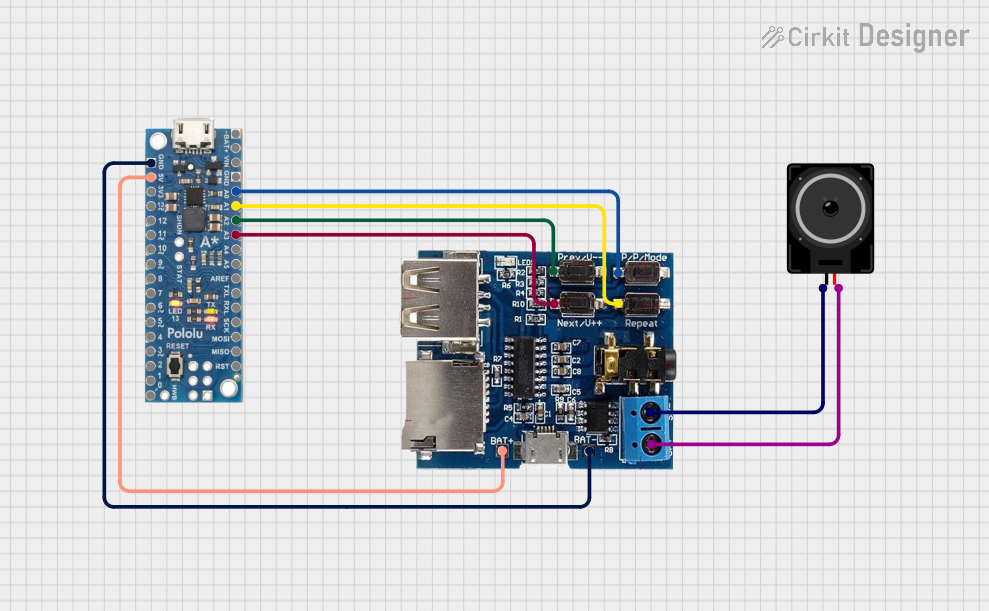
 Open Project in Cirkit Designer
Open Project in Cirkit Designer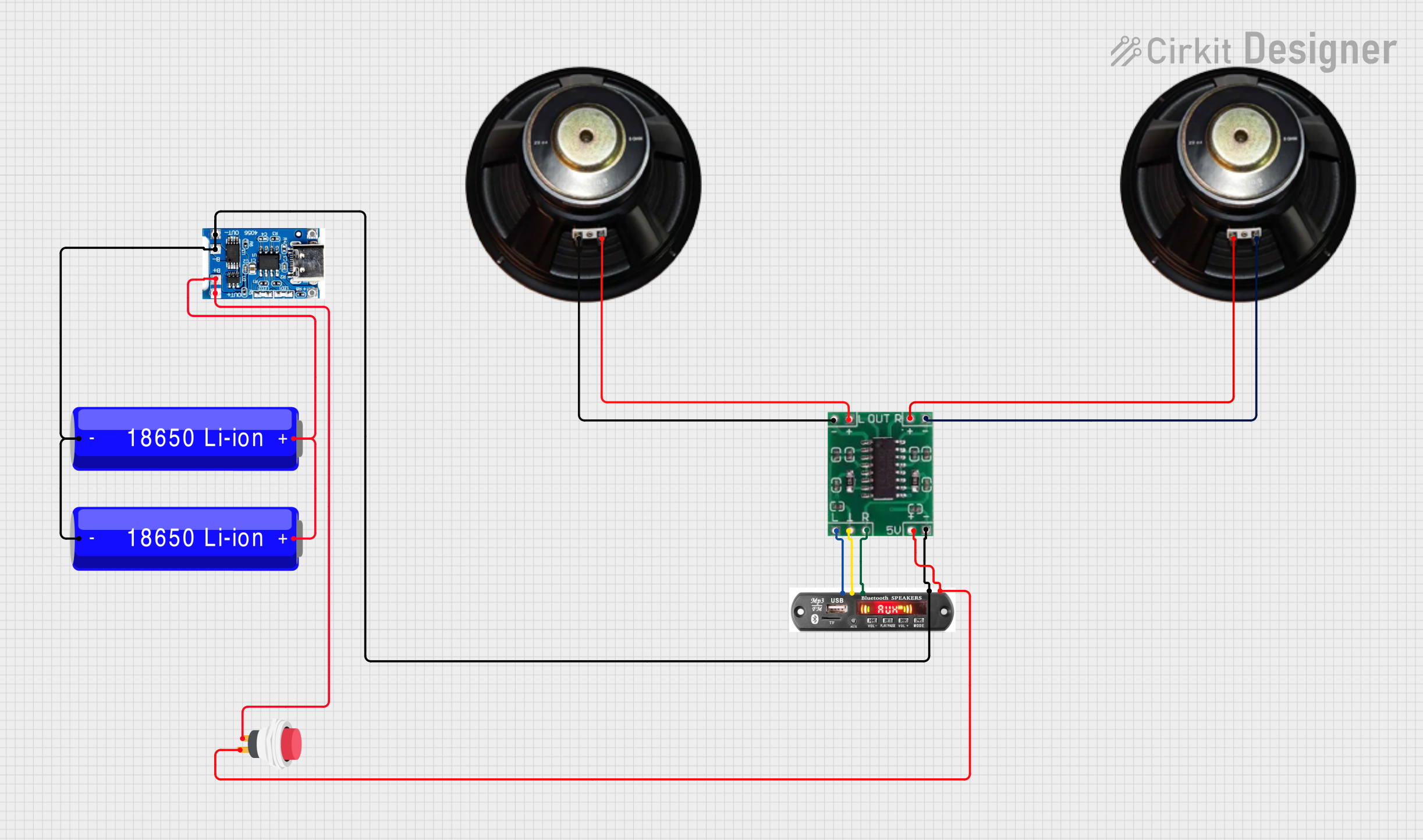
 Open Project in Cirkit Designer
Open Project in Cirkit Designer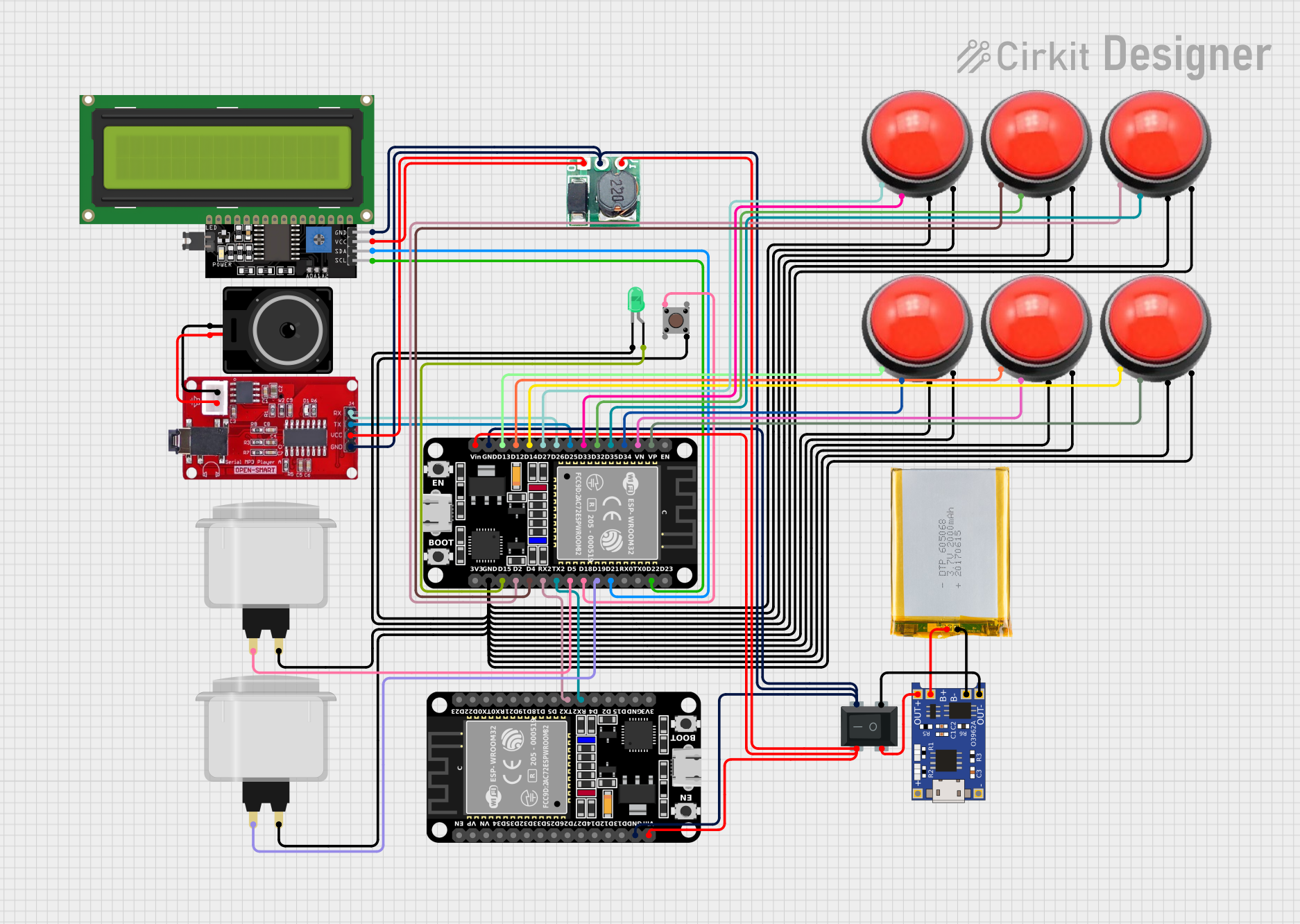
 Open Project in Cirkit Designer
Open Project in Cirkit DesignerExplore Projects Built with Serial MP3 Player

 Open Project in Cirkit Designer
Open Project in Cirkit Designer
 Open Project in Cirkit Designer
Open Project in Cirkit Designer
 Open Project in Cirkit Designer
Open Project in Cirkit Designer
 Open Project in Cirkit Designer
Open Project in Cirkit DesignerCommon Applications and Use Cases
- DIY audio projects
- Interactive art installations
- Sound effects for toys and gadgets
- Educational tools for learning about electronics and programming
- Customizable alarms and notification systems
Technical Specifications
Key Technical Details
- Supported Formats: MP3, WAV
- Supply Voltage: 3.2V - 5.25V
- Operating Current: 20 - 60mA
- Standby Current: <3mA
- Output: DAC 2-channel stereo output
- Signal-to-Noise Ratio: 90dB
- Distortion: 0.06%
- Storage: microSD card (supports up to 32GB)
Pin Configuration and Descriptions
| Pin Number | Name | Description |
|---|---|---|
| 1 | VCC | Power supply (3.2V - 5.25V) |
| 2 | GND | Ground connection |
| 3 | TX | Serial transmit, connects to RX on the microcontroller |
| 4 | RX | Serial receive, connects to TX on the microcontroller |
| 5 | SPK1 | Speaker output 1 |
| 6 | SPK2 | Speaker output 2 |
Usage Instructions
How to Use the Component in a Circuit
- Connect the VCC pin to a power supply within the specified voltage range.
- Connect the GND pin to the ground of the power supply.
- Connect the TX pin of the Serial MP3 Player to the RX pin of your microcontroller.
- Connect the RX pin of the Serial MP3 Player to the TX pin of your microcontroller.
- Attach a speaker to the SPK1 and SPK2 pins.
Important Considerations and Best Practices
- Ensure that the power supply voltage does not exceed the recommended range to prevent damage.
- Format the microSD card to FAT16 or FAT32 and store MP3 files in the root directory or folders.
- Use a level shifter if the microcontroller operates at a different logic level than the Serial MP3 Player.
- Keep the serial communication lines as short as possible to reduce noise and interference.
Example Code for Arduino UNO
#include <SoftwareSerial.h>
// RX and TX connected to pins 10 and 11 on the Arduino
SoftwareSerial mySerial(10, 11);
void setup() {
// Open serial communications
Serial.begin(9600);
while (!Serial) {
; // Wait for serial port to connect
}
// Set the baud rate for the MP3 player
mySerial.begin(9600);
delay(500); // Wait for MP3 player to initialize
mySerial.write(0x7E); // Starting byte
mySerial.write(0xFF); // Version
mySerial.write(0x06); // Command length
mySerial.write(0x09); // Command name (Play)
mySerial.write(0x00); // Feedback (0x00 = no, 0x01 = yes)
mySerial.write(0x00); // Parameter 1 (0x00 = no repeat, 0x01 = repeat)
mySerial.write(0x01); // Parameter 2 (song number)
mySerial.write(0xEF); // Ending byte
}
void loop() {
// Here, you can add code to control the MP3 player further,
// such as play, pause, next, previous, volume control, etc.
}
Troubleshooting and FAQs
Common Issues Users Might Face
- No Audio Output: Ensure the speaker is properly connected and the volume is not set to zero.
- Serial Communication Failure: Check the wiring between the Serial MP3 Player and the microcontroller, and ensure the correct baud rate is set.
- File Not Playing: Verify the microSD card is formatted correctly and the MP3 files are not corrupted.
Solutions and Tips for Troubleshooting
- If the device is not responding, reset the power supply and check all connections.
- Use a different microSD card to rule out issues with the card itself.
- Ensure that the MP3 file names are in a format that the Serial MP3 Player can recognize.
FAQs
Q: Can I connect the Serial MP3 Player directly to an Arduino without a level shifter? A: Yes, if the Arduino operates at 5V, it is within the acceptable voltage range for the Serial MP3 Player.
Q: How many audio files can the Serial MP3 Player handle? A: It can handle as many files as the microSD card can store, up to the card's capacity limit.
Q: Can I power the Serial MP3 Player from the Arduino's 5V pin? A: Yes, as long as the Arduino's power supply can handle the additional current draw.